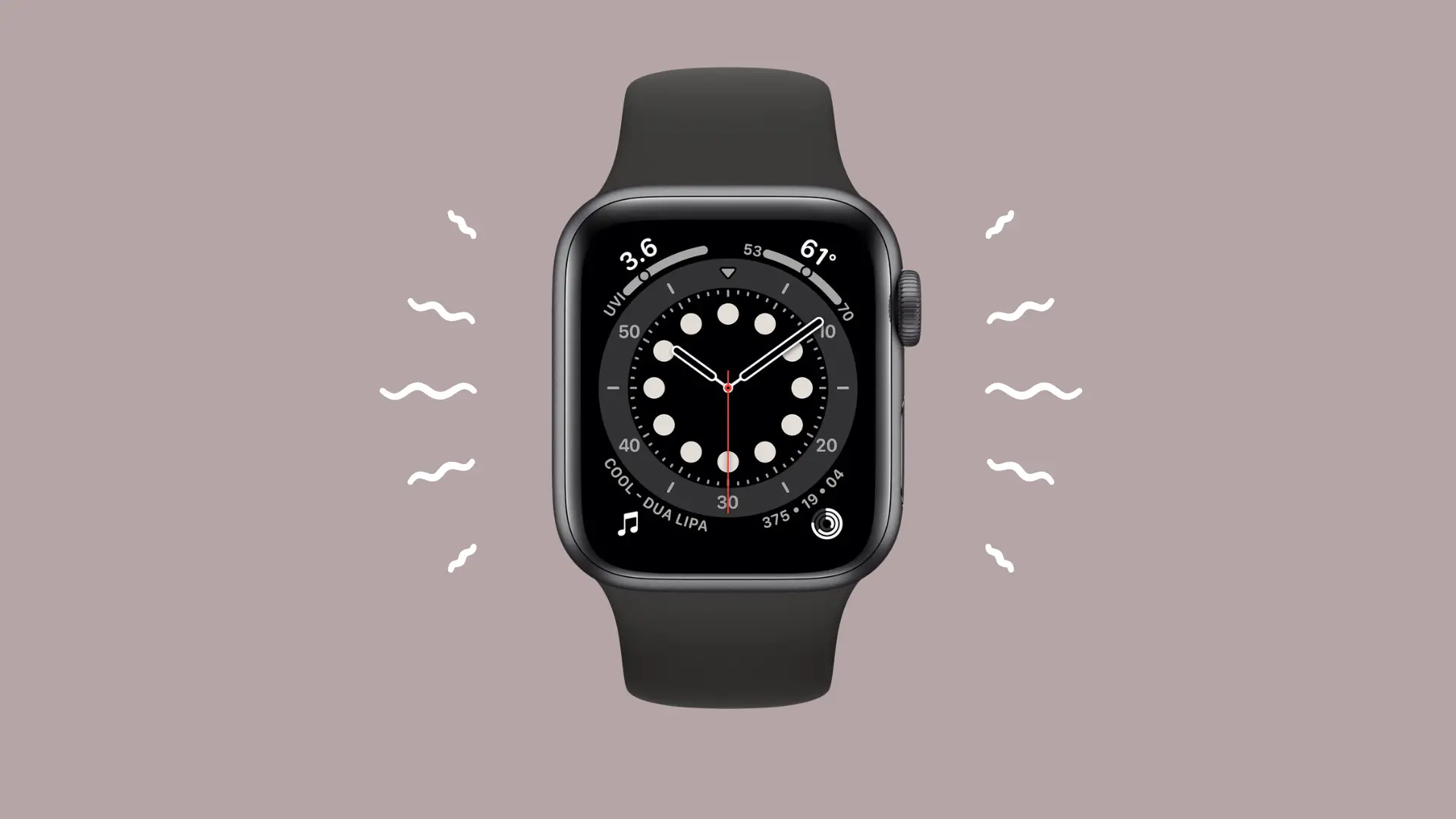Samsung Health Not Tracking Steps? Here’s Why

If you’ve noticed that your Samsung Health app is failing to accurately track your steps, it can be frustrating.
Rest assured, we’re here to help. In this article, we’ll explore the possible causes behind this issue and provide you with valuable insights to resolve it. Get ready to regain accurate step tracking with your Samsung Health app.
How to Fix Samsung Health Not Tracking Steps:
Reactivating Step Notifications on Samsung Health App
If you’re facing issues with Samsung Health not tracking your steps, it might be due to the recent update that could have inadvertently disabled the step notifications. To resolve this, follow the steps outlined below:
- Open the Samsung Health App: Navigate to your phone’s menu and tap on the Samsung Health app to open it.
- Access the General Settings: Once you’re in the app, scroll down to find the ‘General’ option. Tap on it to reveal a sub-menu.
- Modify Notification Settings: In the sub-menu, locate and select ‘Notifications’. This should lead you to a screen with several notification categories.
- Enable Step Notifications: At the bottom of the ‘Notification Categories’, there should be an option for ‘Steps’. If this option is grayed out, it means the step notifications have been disabled. Tap on it to enable.
- Verify Permissions: It’s essential to check that the Samsung Health app has the necessary permissions to access your phone and physical data. Go to your phone’s general settings, then locate ‘App Permissions’. Ensure that all required permissions are enabled for Samsung Health, including steps and physical activity data.
- Enable App Notifications: In addition to the app permissions, make sure that your phone’s settings allow notifications for the Samsung Health app.
Granting Permissions for Step Tracking
Next, ensure that the necessary permissions are granted to Samsung Health or your preferred activity tracking app. Follow these steps:
- On your Samsung watch, open the Settings app.
- Scroll down and select “Apps”.
- Locate and choose “Samsung Health” or the app you are using for activity tracking.
- Grant the app permission to access the sensors by selecting “Allow” or a similar option.
- Go back to the previous screen and look for “Physical activity” permission. Enable access for the app to track your physical activity accurately.
- Please note that not all Samsung watch models may have this specific “Physical activity” option.
- Return to the “Apps” section in Settings and select “Health Services” (if available).
- Grant “Health Services” access to both “Physical activity” and “Sensors” to ensure proper functionality.
- It’s important to note that not all Samsung watch models may have the “Health Services” option.
Adjusting the Automatic Workout Detection in Samsung Health
At times, Samsung Health’s automatic workout detection feature, while intended to enhance tracking of steps and other activities, may interfere with step count accuracy. Some users have reported improvements in their activity tracking upon disabling this feature. Here’s how to do it:
- Locating the Settings: Start by opening the Samsung Health app on your watch. Scroll down to find and select ‘Settings’.
- Accessing Workout Settings: Within the Settings, locate ‘Auto-detect workouts’ or ‘Workout detection’ depending on your device model.
- Modifying Workout Detection: You now have the choice to either completely turn off the auto-detection or selectively disable detection for specific activities. If you’re using a Galaxy Watch 4 or 5 series, you can disable all activities. For older models, you may want to start by disabling high-impact exercises such as the Elliptical trainer and Rowing.
- Making Changes Through the Wearable App: If you’re using a Galaxy Fit or a similar model, these changes can be made through the Galaxy Wearable app. Go to ‘Watch Settings’, then ‘Samsung Health’, and finally toggle off ‘Activities to detect’. For Galaxy Fit users, navigate to ‘Health settings’ and then ‘Workout detection’ to make the necessary adjustments.
Enabling Continuous Heart Rate Measurement for Accurate Activity Data
To ensure the most precise activity data, it’s important to configure Samsung Health’s app to measure your heart rate continuously instead of every 10 minutes. Follow the appropriate steps based on your specific watch model:
For Wear OS 3 Watches (e.g., Galaxy Watch 5 and 4):
- Open the Samsung Health app on your watch.
- Scroll down and tap on “Settings”.
- Tap on “Heart rate”.
- Choose the option “Measure continuously” to enable continuous heart rate monitoring.
For Tizen Watches (e.g., Galaxy Watch 3):
- Open the Samsung Health app on your watch.
- Select “Settings” located at the bottom.
- Tap on “HR and stress measurement”.
- Choose the option “Measure continuously” to activate continuous heart rate monitoring.
For Galaxy Fit and Galaxy Fit2:
- Use the Galaxy Wearable app on your phone.
- Tap on “Health settings”.
- Select “Auto heart rate settings”.
- Enable the option for continuous heart rate measurement.
For Gear Fit2 and Fit2 Pro:
- Press the power button on your Gear Fit2 or Fit2 Pro.
- Swipe to find the option “Auto HR” and tap on it to activate continuous heart rate monitoring.
Changing the Watch Face to Fix Step Count Issue
If you’re experiencing issues with your Samsung Galaxy Watch not tracking steps correctly, the problem might be associated with the watch face you’re currently using. Particularly, the issues might arise when using a watch face with a built-in step counter. Here’s how you can resolve this:
- Choose a Plain Watch Face: Begin by selecting a simple watch face that doesn’t include any built-in step counter or heart rate counter. These counters on the watch face might interfere with the proper counting of steps.
- Test Step Count: After changing to a plain watch face, move around and monitor if the step count increases accurately. If it does, this likely resolves the issue.
- Avoid Certain Watch Faces: You might want to avoid using watch faces with step counters or heart rate counters, even if they’re directly from the Samsung store. The problem seems to occur not only with custom watch faces but also with some default ones.
Remember, this is a workaround and not a perfect solution, as users should ideally be able to use any watch face they prefer. Until a more permanent fix is released, this method should help ensure accurate step counting.
Updating and Clearing Cache of Samsung Health App
If Samsung Health isn’t tracking your steps, an outdated version of the app or stored cache could be causing the problem. Here’s how to troubleshoot:
- Check for App Updates: It’s important to ensure you’re using the latest version of the Samsung Health app. To do this, go to your phone’s Google Play Store or the Galaxy app, search for Samsung Health, and check if there are any pending updates. If there are, download and install them.
- Clear the App Cache: The cache of an app can sometimes lead to malfunctions. To clear the cache of Samsung Health, navigate to your phone’s settings. Then, follow this path: Settings > Apps > Samsung Health > Storage > Clear Cache. This will delete temporary files that could be causing issues.
- Clear App Data (if necessary): If the steps above don’t resolve the problem, you may need to clear all data from the app. To do this, stay on the same screen where you cleared the cache, and then select ‘Clear Data’. Please note that this will remove all your stored data in the Samsung Health app, so use this step as a last resort.
Reinstalling the Samsung Health App
If none of the above solutions work, the next step would be to uninstall and then reinstall the Samsung Health app. Please note, this step will delete all local data stored in the app. Backup any necessary information before proceeding.
- Uninstall Samsung Health: You can uninstall the app by long-pressing its icon on your home screen or app drawer, then selecting ‘Uninstall’.
- Restart Your Phone: After uninstalling the app, restart your phone to clear any remaining cached data.
- Reinstall Samsung Health: Finally, go to the Google Play Store (or the Galaxy Store), search for Samsung Health, and install the app. After installation, sign in with your account and check if the issue persists.
Checking Phone’s Location Settings
Sometimes, the Samsung Health app may require location services to be enabled on your phone to track your steps accurately.
- Access Phone’s Location Settings: Go to your phone’s settings, then navigate to the ‘Location’ section.
- Enable Location Services: If your location services are turned off, switch them on. Ensure that the mode is set to ‘High accuracy’ or the equivalent on your device.
- Check App Permissions: Ensure that Samsung Health has permission to access your location. You can do this by going to Settings > Apps > Samsung Health > Permissions, then ensuring that ‘Location’ is enabled.
Configuring Google Fit for Accurate Step Tracking
If you utilize Google Fit on your Samsung watch and encounter step tracking issues, follow these troubleshooting steps:
- Open the Google Fit app on your watch. You can access it through the Activity Goal, Breathe, or Heart Rate Fit apps.
- Scroll to the bottom of the app and tap on “Settings”.
- In the Settings menu, scroll down until you find the options “Track physical activity” and “Use body sensors”.
- Ensure that both toggles are enabled by switching them to the “On” position.
- Enabling “Track physical activity” allows Google Fit to monitor your physical activity accurately, while enabling “Use body sensors” ensures the utilization of the watch’s sensors for precise tracking.
Ensure Power Saving Mode isn’t Hindering the App
Your phone’s power saving mode might limit the Samsung Health app’s background activity, affecting step tracking. Here’s how you can check this:
- Go to Phone Settings: Navigate to the settings menu of your phone.
- Access Battery Settings: From the settings menu, tap on ‘Battery’ or ‘Device Care’ (based on your phone model), then select ‘Battery’ again.
- Check Power Saving Mode: If power saving mode is enabled, it could be restricting the Samsung Health app. Either turn off the power saving mode or ensure that Samsung Health is exempt from any restrictions.
- Enable Unrestricted Usage for Samsung Health: You can usually find an option to allow specific apps to use battery in the background in the ‘App Power Management’ or similar menu within the Battery settings. Make sure Samsung Health is allowed to use power freely in the background.
Performing a Hard Reset on Your Samsung Watch
In certain instances, problems related to step tracking and heart rate monitoring on your Samsung watch can be resolved by performing a hard reset. It is important to note that a hard reset will restore your watch to its original factory settings. However, before proceeding with the reset, you will have the option to back up your data to Samsung Cloud. Please follow the steps provided below attentively as a hard reset is a more intricate procedure compared to a regular reset.
- Initiate a Hard Reset: If you’re experiencing issues not just with step tracking but also heart rate monitoring, start by performing a hard reset. This process differs from the reset option found in the watch’s menu. To initiate a hard reset, hold the bottom button on the watch until you see “rebooting” under the Galaxy logo on the screen.
- Access the Bootloader Menu: Once the watch starts rebooting, start pressing the bottom button repeatedly. This action will cycle through different options in the bootloader (BL) menu. Continue pressing the bottom button until you reach the ‘recovery’ option.
- Select Recovery Option: To select ‘recovery’, hold down the bottom button. This will initiate a reset. Note that if you release the button for too long before selecting ‘recovery’, the watch will boot up normally, and you’ll have to start the process over again.
- Repeat the Hard Reset: After the first hard reset is complete, don’t pair your watch with your phone yet. Instead, repeat the hard reset process one more time.
- Pair Your Device: After performing the hard reset twice, you can now pair your watch with your phone normally using the Galaxy Wearable app. It’s important that you don’t restore old data during this process.
- Check Your Watch: After the watch is paired, check your step count, heart rate, etc. to see if the issues have been resolved.





